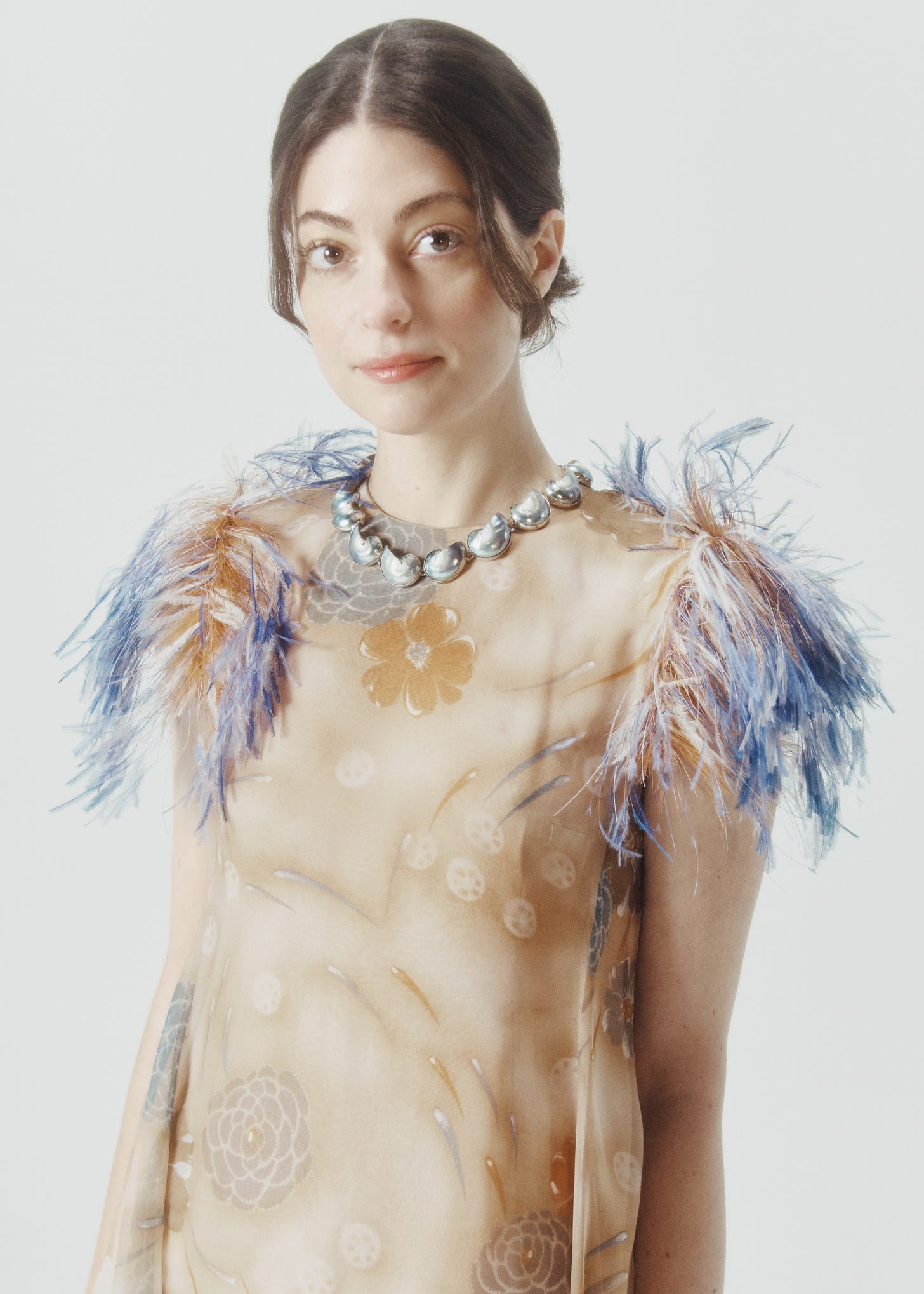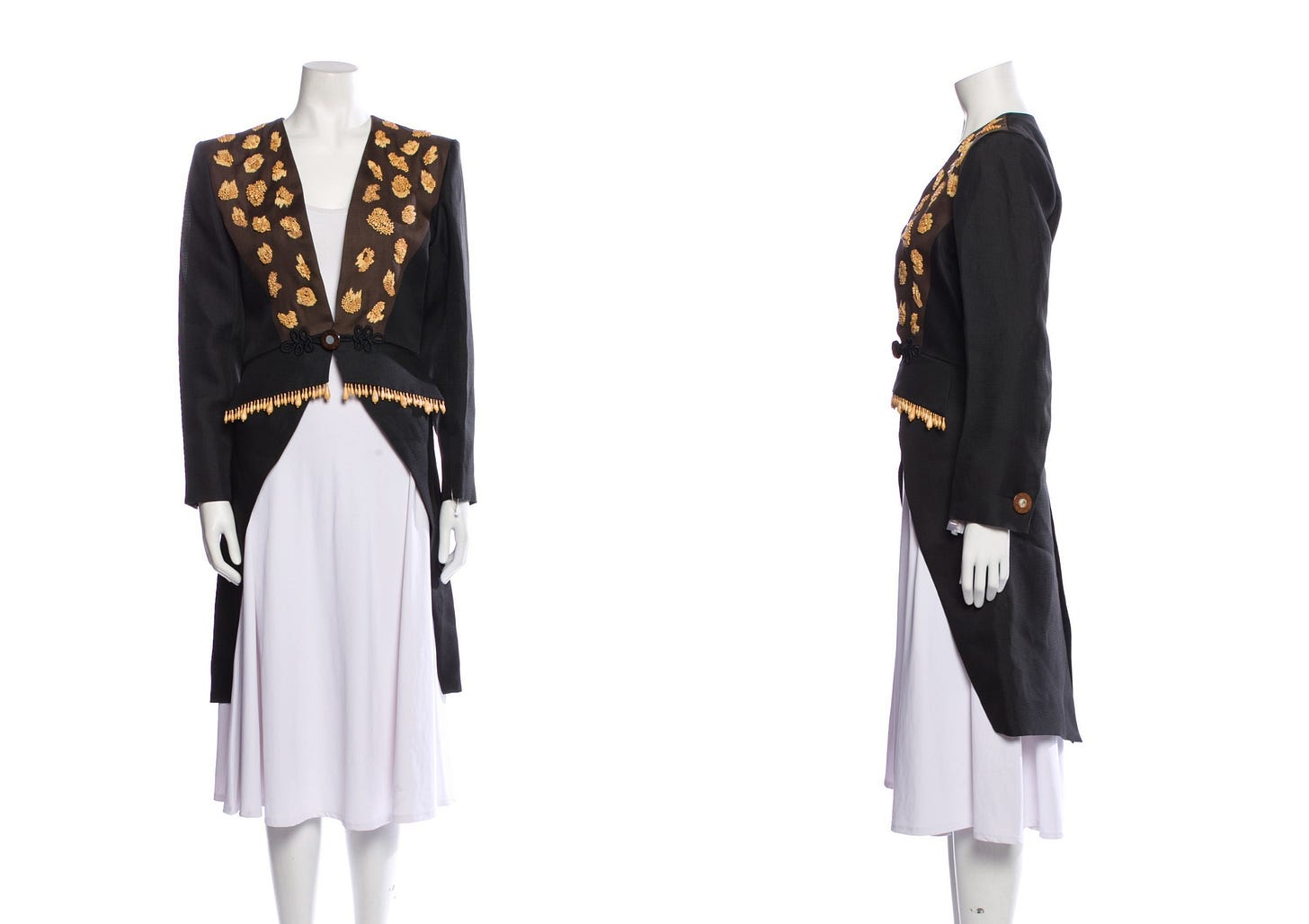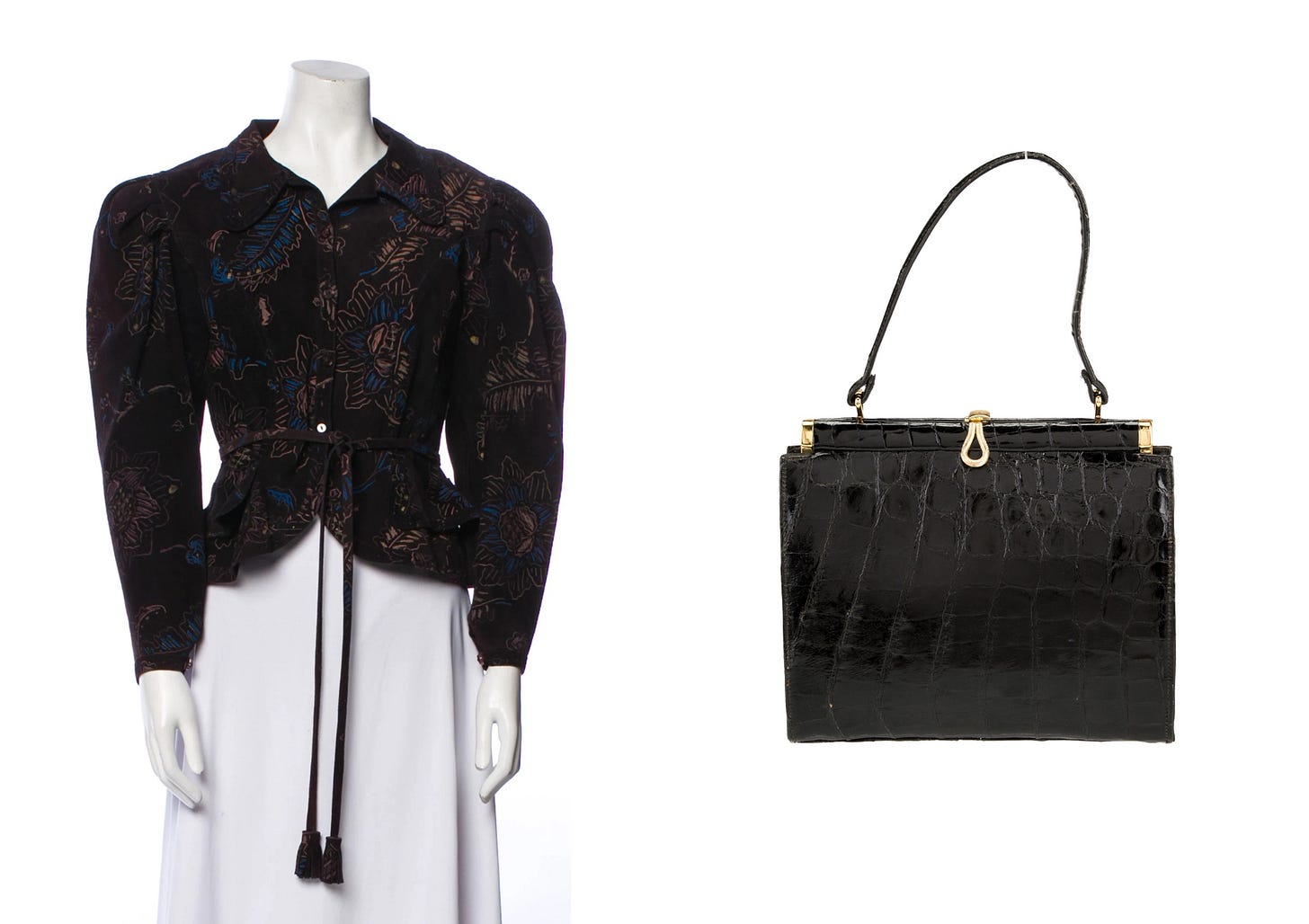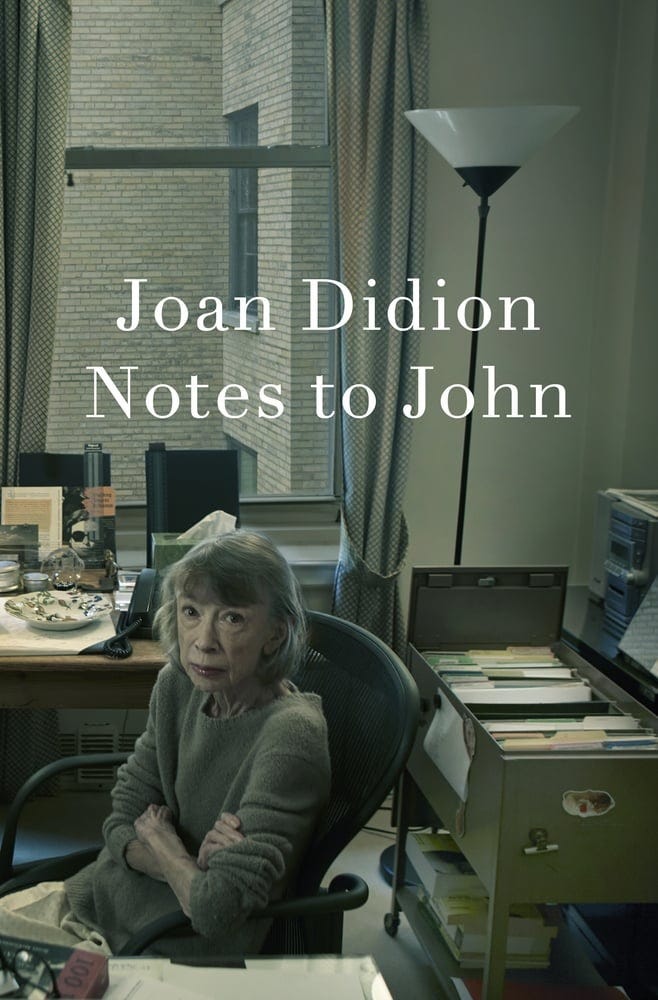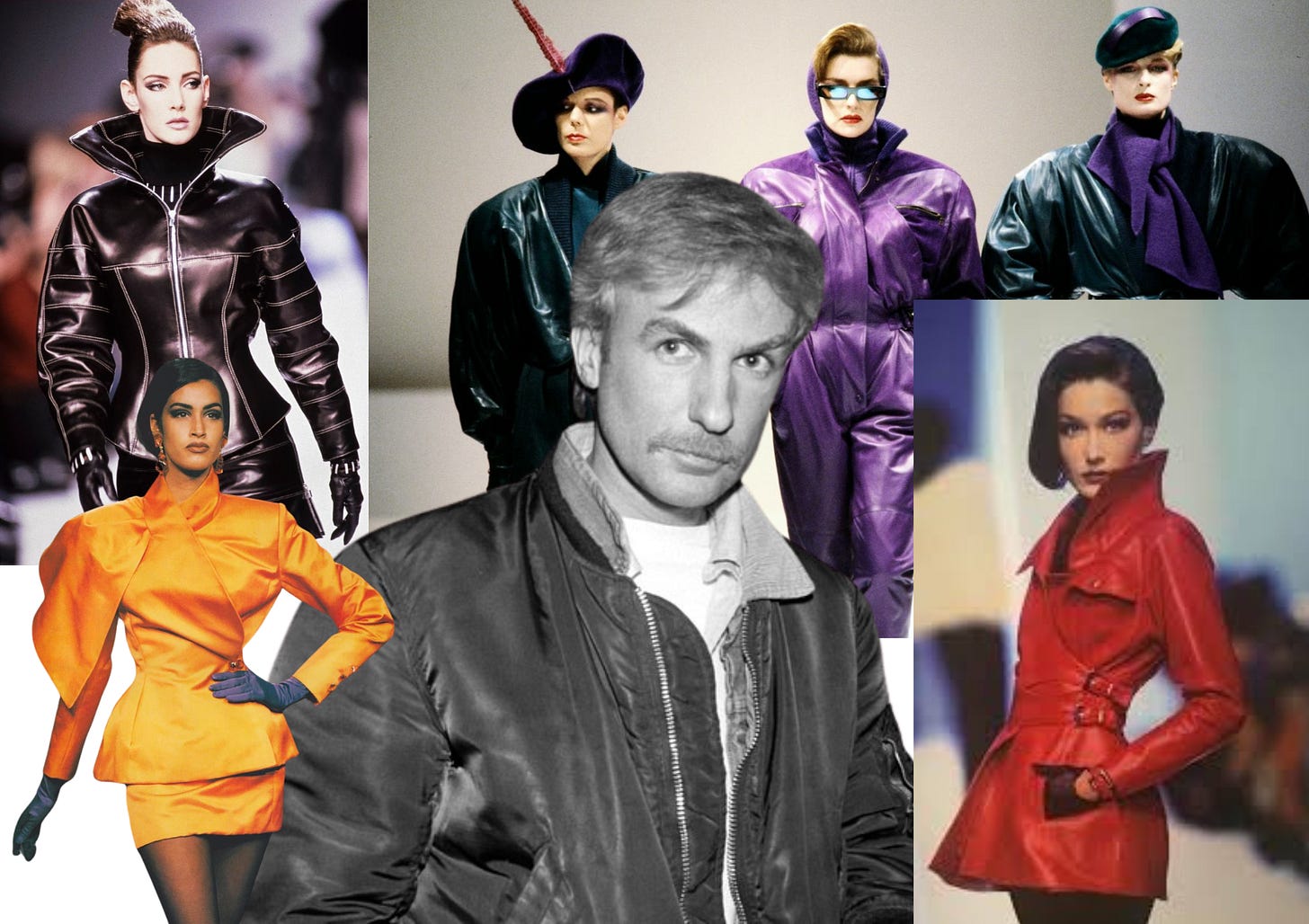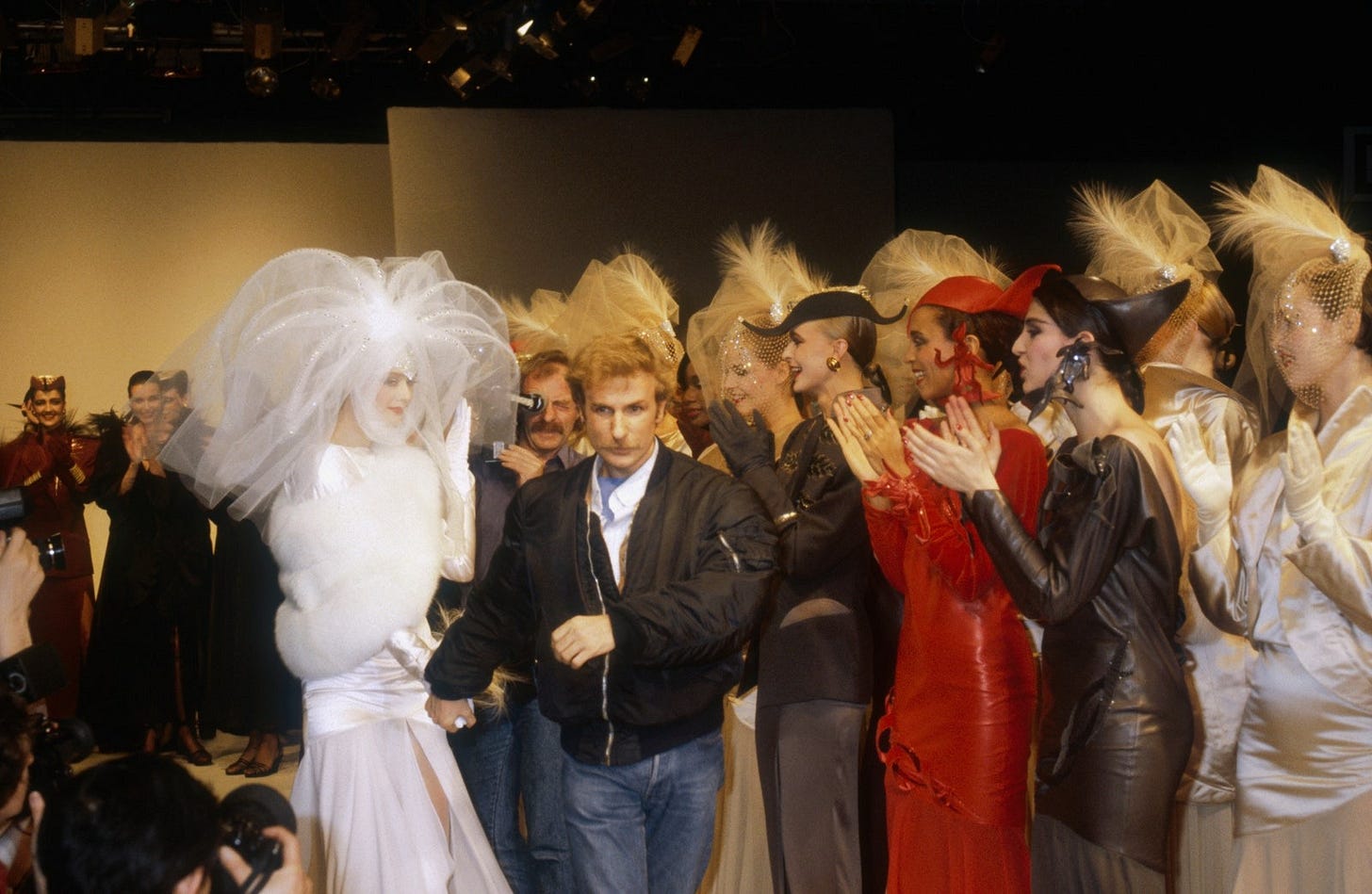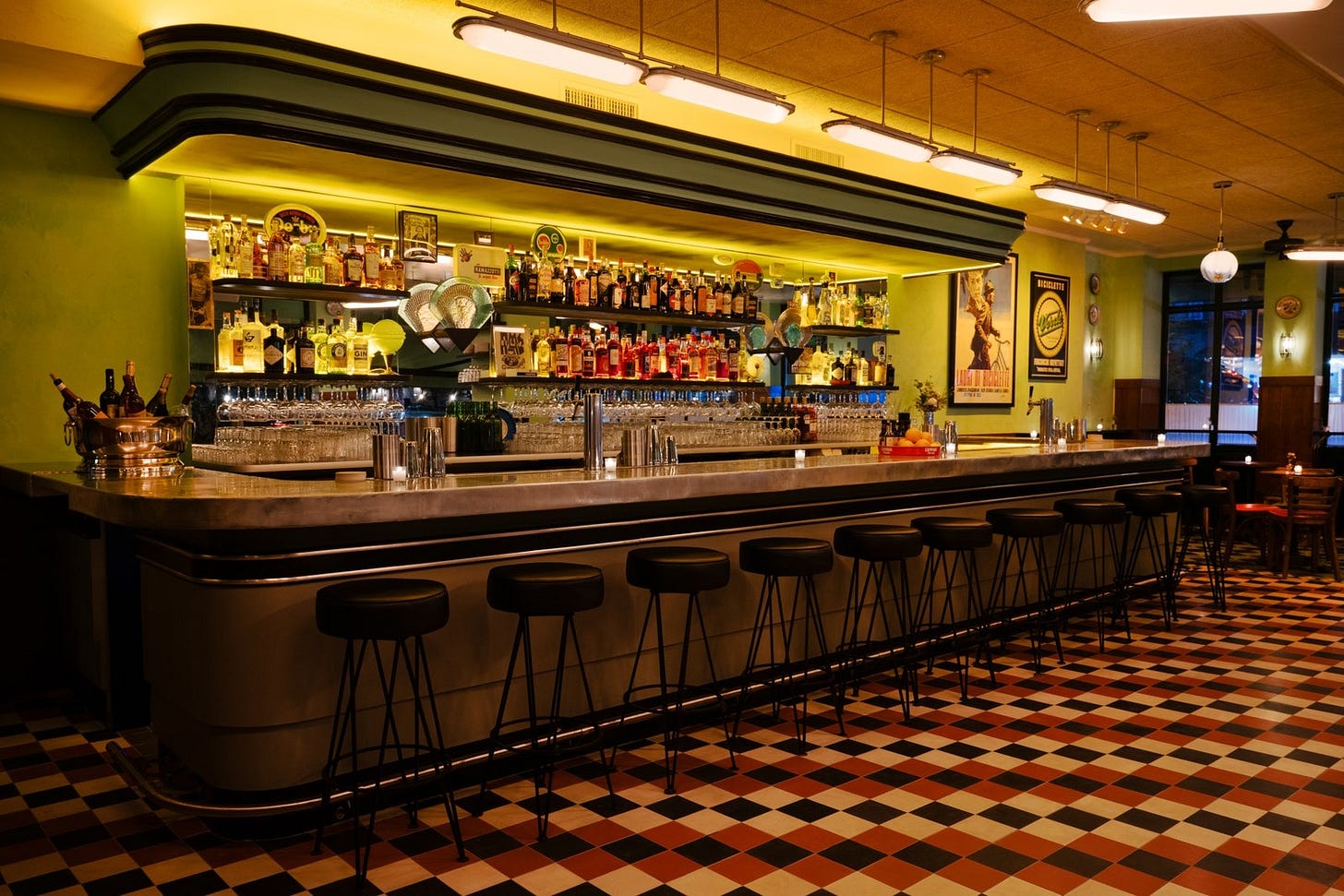What Guests Should Wear to the Met Gala, Per Lilah
Plus, more vintage shopping and culture recommendations for the week.
This week’s recommendations: With the Met Gala just days away, the city is humming with fittings and whispers of who’s wearing what. In the spirit of the theme—Superfine: Tailoring Black Style—I’m spotlighting a few archival pieces that would look superb on Monday night’s red carpet: razor-sharp suiting, sculptural pleats, and one particularly perfect Saint Laurent tuxedo jacket. But beyond vintage clothing, I’ve also gathered a few essentials for the week ahead: a haunting posthumous read from Joan Didion, a dreamy new Italian bar in the East Village, and a reminder to stream Bonjour Tristesse—the 1958 original, not the remake—for a Riviera mood steeped in cigarette smoke and exquisite ennui.
Saint Laurent Tails
With the Met Gala’s dress code—“Tailored for You,” in honor of the Costume Institute’s spring 2025 exhibition “Superfine: Tailoring Black Style”—tailoring is taking center stage. And what would I love to see on the red carpet? This Yves Saint Laurent jacket from Spring 1994. I’ve even tracked down the runway footage to the exact moment it walked the catwalk—for your viewing pleasure, above. It’s cut with formal tails, trimmed with wood-toned beaded fringe, and marked by a brown lapel label embroidered to look almost carved. Equal parts riding habit and red carpet jazz age, it’s tailoring that sways with swagger.

Patrick Kelly Blazers
Patrick Kelly—who you may remember from a previous You Really Should Know This—is exactly the kind of designer whose work deserves a major red carpet moment. The first Black American admitted to Paris’s Chambre Syndicale in 1988, Kelly brought irreverence and razor-sharp tailoring to fashion’s highest echelons. Here are two jackets that showcase this: An angular black jacket with tasseled drawstrings and a red wool jacket trimmed with his signature gold buttons—both Kelly at his most iconic.

More Terrific Tailoring
Word from multiple Met Gala guests? Gowns are being skipped in favor of tuxedos and suits. These two vintage picks fit the moment perfectly: a razor-sharp pantsuit from Jean Paul Gaultier’s Fall 1994 “Le Grand Voyage” collection—where tailoring met global glamour—and a dark blue double-breasted Claude Montana (this week’s You Really Should Know This) suit from the late ’80s, cut with the kind of commanding shoulders that made him the king of power dressing. Both prove that great tailoring never goes out of style.

Pleated Perfection
Beyond Met Gala recs, here’s a piece I really do think you should buy. From the same Spring 1991 collection as those iconic Vogue cover bodysuits, this pleated silk Versace skirt was worn down the runway by none other than Linda Evangelista. That season, Gianni Versace channeled his love of both high art and pop culture into a vivid array of catsuits and separates, with references ranging from Sonia Delaunay to Russian Constructivism. This skirt, rendered in rich primary colors and finished with sharp, sculptural pleats, is a refined echo of that exuberant show—and a rare, runway-worn piece of fashion history.
Peak Prada
A standout from Prada’s Fall 1999 collection—what Miuccia herself called “sincere chic.” Cathy Horyn described the clothes that season in her New York Times review as “things that women, not just camp followers, could wear,” and this thick jacquard silk dress is exactly that. Strewn not with florals but foliage, it has all the hallmarks of late-'90s Prada: rich texture, intellectual restraint, and an undercurrent of sensuality. Quietly powerful, and rarer than a lipstick-print organza.
More Vintage Things—No Context Needed



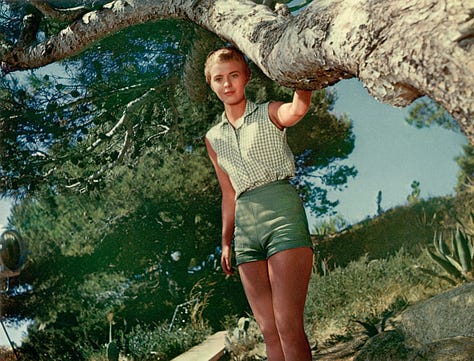
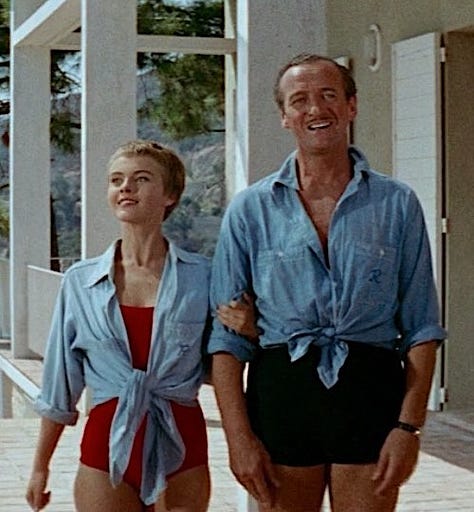
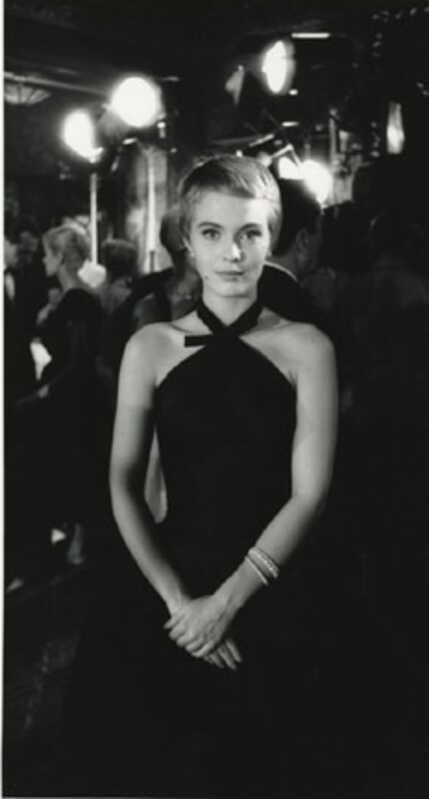
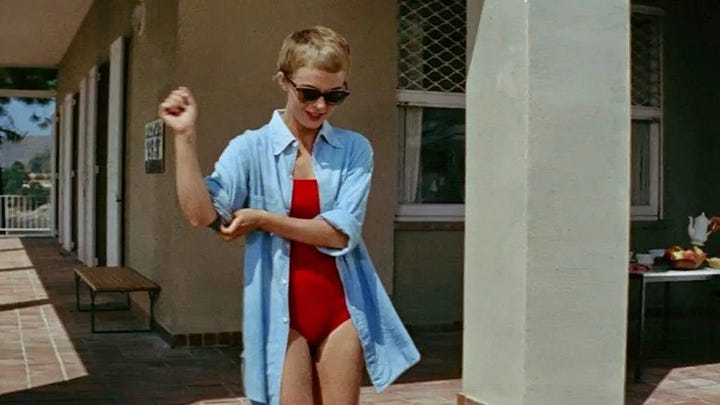
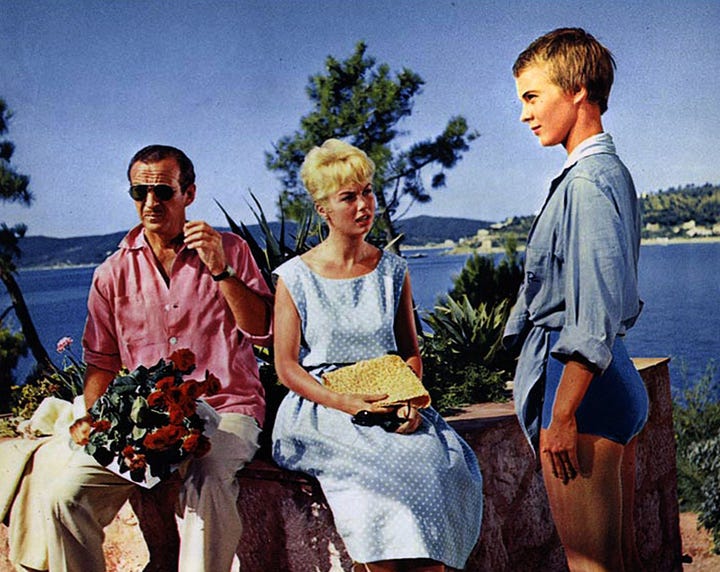

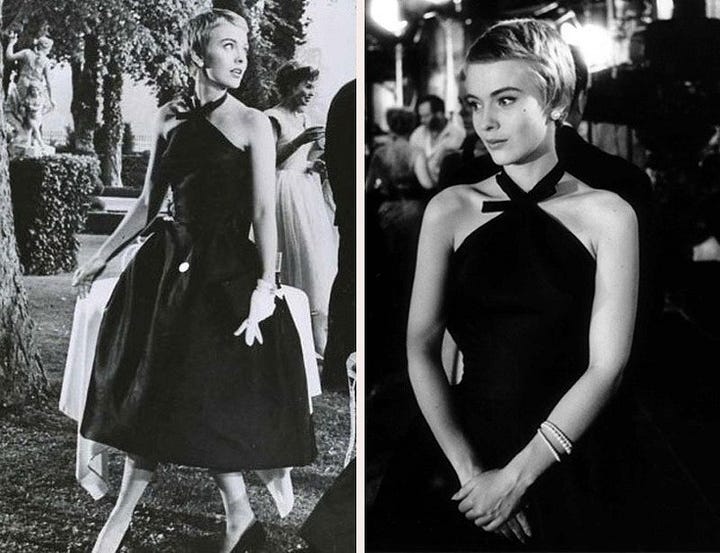
Hello, Chic!
With a new adaptation of Bonjour Tristesse hitting theaters today—starring Lily McInerny as Cécile, Chloë Sevigny as Anne, and Claes Bang as Raymond—it’s the perfect moment to revisit Otto Preminger’s sultry 1958 original. Set against the sun-drenched Riviera, the film follows Jean Seberg’s Cécile—a teenage heiress gliding through a summer of cocktails, chaos, and emotional sabotage.
Shot in dreamy Technicolor and icy black-and-white, it’s a study in contrasts—much like its fashion. Seberg wears a wardrobe of halters, high-waisted shorts, and razor-sharp shirting by Givenchy, while Deborah Kerr floats through scenes in crisp cottons and sculptural gowns that wouldn’t look out of place on a modern runway.
Yes, there’s heartbreak, betrayal, and a hint of nihilism—but the real draw is the mood: wealthy disaffection wrapped in impeccable wardrobe. Watch it now. The remake may glitter, but this one glows.
Didion’s Swan Song
Joan Didion’s posthumous release, Notes to John, is unlike anything else in her oeuvre. Discovered after her death in 2021, the book comprises diary entries from 1999 to 2002, chronicling her therapy sessions with psychiatrist Roger MacKinnon. Each entry is addressed to her late husband, John Gregory Dunne, offering a raw and unfiltered glimpse into her psyche during a tumultuous period.
Gone is the oblique, stylized prose we associate with Didion. Instead, readers encounter stark, plainspoken reflections on her daughter Quintana’s struggles with alcoholism, her own secret battle with breast cancer, and the complexities of her familial relationships. As Vogue put it, “It’s startling to read such lines,” especially for those familiar with the more restrained narratives of The Year of Magical Thinking and Blue Nights.
Whether Didion intended these pages for publication remains uncertain. Yet, their existence adds a profound layer to our understanding of her—revealing a woman grappling with vulnerability, identity, and the raw edges of grief. For devoted fans and new readers alike, Notes to John is a haunting, essential read.
The Prince of Fashion
Before there was Olivier Rousteing’s exaggerated shoulders at Balmain, there was Claude Montana—Paris’s reigning king of sharp tailoring, sculptural silhouettes, and unapologetic attitude. Rising to fame in the late 1970s, Montana helped define the aggressive glamour of the 1980s with razor-edged suits, leather everything, and shoulders so strong they could’ve held up the Arc de Triomphe.
His runway shows were less presentations, more theatrical feats: think models in chrome and cashmere stomping through fog machines, hair teased to the heavens. His muse? Power—on women, and on their terms.
In 1990, he was tapped to helm the house of Lanvin, where his haute couture collections were critically lauded (even if commercially doomed). One reviewer called his silhouettes “armor with elegance.” Another simply wrote: Exhilarating.
Though his star dimmed in the 1990s, Montana’s influence remains everywhere—from Demna’s structural drama at Balenciaga to the steely seduction of Anthony Vaccarello’s Saint Laurent. If you’ve ever thrown on an oversized blazer and felt invincible, you owe a quiet thank you to Claude.
Negroni Hour
Bar Bianchi, the latest from Jon Neidich’s Golden Age Hospitality (of Le Dive and The Nines fame), is an aperitivo daydream in the East Village. Inspired by the piazza culture of Milan and classic spots like Bar Luce and Bar Basso, it blends old-world charm with a modernist wink—think Venetian plaster walls, Italian film posters, and space-age lighting. Come for the fried stuffed olives and a spritz in a burgundy glass, stay for veal Milanese and rigatoni di Nash. It’s Italy by way of downtown, and your new summer haunt.




